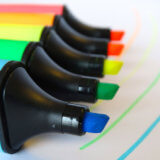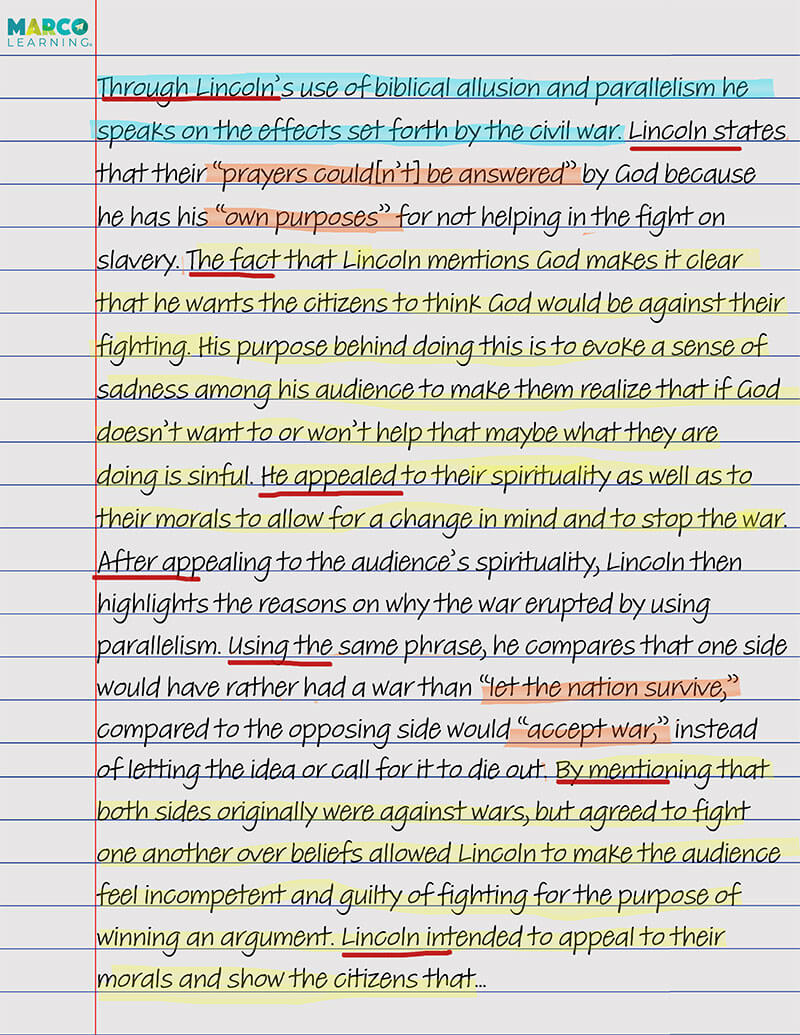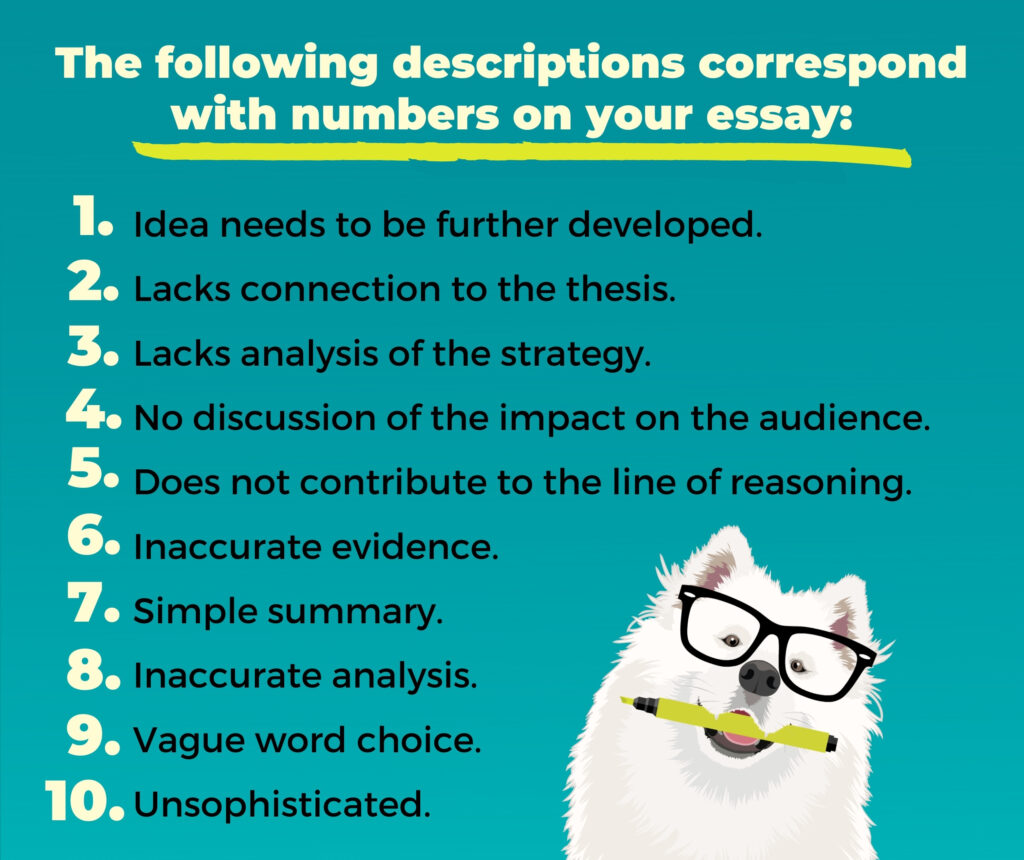by Katie Upton
Great news: enrollment in the AP® English Language and Composition course increases every year! Bad news: the amount of grading for AP® English teachers increases every year! As an experienced teacher, I put a lot of pressure on myself to make sure that I am giving every single student copious amounts of feedback on their writing. I am positive that they read every single word that I write on a formative or summative assessment, take those notes to heart, and create masterpieces on the next essays. I am also positive that my teacher dreams are entirely unrealistic. However, I cannot not read everything they write; how else will I know the growth they’ve made, the areas of weaknesses they must work on; how else will I recognize their voices?
While I recognize that my desire to conference with each student over every piece of writing they produce is not feasible, I still believe that my feedback is imperative to their success, and this task is getting more difficult every year. This year, I have 112 AP® Lang students, and although this is a smaller number than I’ve had in the past, combined with my two AP® Research sections, this leads to hours and hours of grading every week. Over the years, I’ve had to get really creative about the types of formative assessments I take and the type of feedback I provide. Here is what I found to work best to manage the large amount of grading involved with AP® Lang.

1. Highlight, Highlight, Highlight!
While highlighting writing may seem elementary, I have found this strategy to be effective in providing efficient feedback. Once I target the skills for the assessment, I then decide what students will be highlighting in their writing. For example, if I want to check students’ abilities to embed textual evidence, they write an entire essay and highlight their embedded evidence, or if I am concerned that students are relying too heavily on evidence, I require them to highlight the evidence in one color and the commentary in another.
A student might turn in work that looks something like this, for example.

Here, the start of every sentence is underlined. This enables students to recognize their habits as they write. Are they always writing with an introductory clause? This will help with that elusive sophistication point. Next, highlighted in blue is the topic sentence. The small snippets of evidence are highlighted in orange. This allows students to quickly gauge the length of the evidence. Most importantly, the commentary is highlighted in yellow. The students should see that they have much more yellow highlighting than any other color. Why—because the commentary is THEIR thinking!This visual distinction is an effective way for students to analyze their use of evidence in comparison to their commentary. Sometimes, I ask students to create an entire rhetorical analysis (with at least two body paragraphs), but they highlight the body paragraph that they want me to grade. This activity allows them to closely evaluate their own writing and look for their strengths and weaknesses. Beside the paragraph they choose, they must write a short note that justifies their decision. Now, I am able to grade just a thesis and one paragraph instead of an entire rhetorical analysis essay.
2. Create a grading key!
At the beginning of each school year, I distribute a “grading key” that contains the most common notes I include on students’ writing. It generally looks something like this, but of course, every teacher is different.

For example, #1 on my grading key is “this idea needs further development.” Whenever I see an idea that needs to be further explained, I underline it and write a “1” by it.

I often find that students fail to explain how a piece of evidence supports the thesis, so this note is #2 on the grading key. And so on…
As the year progresses, I may add comments to my grading key, so I display the new comment and number on my projector, and my students simply add it to the key. I’ll be honest, I was a little wary about this idea in the beginning. In fact, when I began, I used to make a tiny key and staple it the essays because I was worried that students would never check the key. Now, when I return the essays and students are reflecting on their performance, I display the grading key on my projector. This has been a game changer for formative assessments. I can review them more efficiently and maintain the integrity of the feedback when it is most important. Students need feedback at half-time, not when the game is over!
3. Grade their ideas, not their writing!
My kids practice their timed essays with ink and paper, just like the actual test. And immediately after we finish writing, we type. Each student types up his or her essay error for error, mistake for mistake, and they learn so much.

Very quickly into my first year as an AP® Lang teacher, I recognized that I needed to grade more than just their writing, although my motto has always been “Writing is thinking!” By providing feedback on their writing alone, I found that I couldn’t really target what my students were struggling with. Were they having difficulty understanding the text, coming up with evidence, or simply formulating their ideas?

To answer this question, I began assessing students’ ideas in verbal form. Now, students can use their phones to film a response to a free response question.
Sometimes their responses are short (30 seconds)—what evidence would they use for a specific argument prompt and why? Or, they are a little longer (2 minutes)—explain the rhetorical situation of a specific rhetorical analysis prompt—or justify which sources they would use for a synthesis prompt and why. By using this format, I can quickly evaluate students’ ideas and provide quick notes on the strengths and weaknesses of said ideas.
These strategies are ideal for formative assessments. As an AP® Lang teacher, it is imperative that I grade summative assessments in their entirety and give students feedback using the AP® English Language Free-Response rubrics. However, the feedback that I give on summative assessments is quite short. Research shows that students rarely review summative feedback unless there is an opportunity for a rewrite; therefore, my feedback is concise, often just checkmarks on the rubric. My hope is that students have applied the suggestions that I have provided for them on their formative work so that there is minimal need for notes on their summative assessments.
Finally, I am sure there are other teachers in your own building who have developed their own strategies for managing a large grade load. Reach out to them, lean on them, and get creative! Remember, our feedback is much more crucial during the process. Be intentional and be awesome!
Learn more about our AP® Teacher Support for English Language and Composition HERE.

Katie Upton has been teaching English courses for 15 years, helping students become college and career ready. She is an expert in AP® Language and Composition and a leader of the AP® Capstone program, and has led professional development as well, helping teachers blend 21st century learning with educational practices that have stood the test of time. A former basketball coach herself, Katie spends her free time cheering on her two boys in all that they do and supporting her husband, a head girls’ basketball coach.
 Help
Help